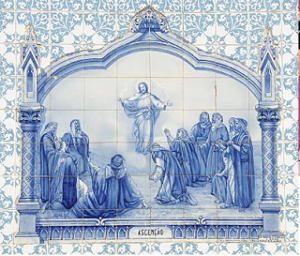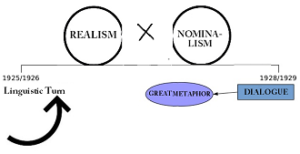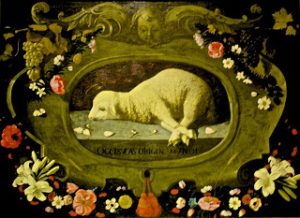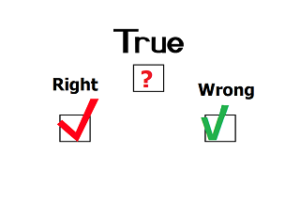
Arquivo para a ‘Uncategorized’ Categoria
Art, split and unity
Hölderlin, a German poet cited and praised by Heidegger, also maintained intimacy with philosophy, in one of his little-known writings he contested the “absolute self”, but it is also necessary to question a precise “we” to a bubble, to a hierarchical world and stylized, in the poet’s perspective, consciousness without an object would be inconceivable and every judgment presupposes the world, which is very close to the awareness of something that phenomenology proposes.
maintained intimacy with philosophy, in one of his little-known writings he contested the “absolute self”, but it is also necessary to question a precise “we” to a bubble, to a hierarchical world and stylized, in the poet’s perspective, consciousness without an object would be inconceivable and every judgment presupposes the world, which is very close to the awareness of something that phenomenology proposes.
The theoretical principles of a philosophy of history, very close to the view of Gadamer’s historical consciousness, were developed as divided into three periods: the unity, the split and the recovery of nature (in the form of the naturalness of art), however Hölderlin treated also from the aortic, and one could think of the real recovery of nature, in pandemic times it seems to breathe: fish, birds and animals reappear, the air is lighter and it seems that nature is grateful.
The split, which causes man to face so many contradictions and inequalities, is also said Rousseau, a condition of freedom, however when faced with indignities and injustices this condition seems to be threatened, the poet used poetry as a “Harmonic opposition” between the self and the world, but it claims a third, poetic and harmonic in which the world of texts inhabits, as Roland Barthes supposed, says in his poetry Half of Life:
Where is it winter, find the flowers, and where the sunlight and the shadows of the earth? ”
In the end, only “walls and flags in the wind” remain
The poem itself is half that cannot be completed without the reader and the world.
It is also uncertainty, according to beautiful image of the “song of the destiny of Hyperion”:
“Like water from cliff to cliff, poured incessantly into the uncertain”.
Hyperion’s destiny song says:
You walk up there in the light
On soft ground, happy geniuses! Sparkling divine breezes
They touch you lightly
Like the fingers of the artist Sacred strings.
What Hölderlin inspires me is the differentiation between thinking and philosophizing, Heidegger also discarded the second, in the case of the poet his life and work cause relations between thought and poetry, and this one in a new relationship with philosophy, there is no poets soon neither philosophers.
Symbolic and structural evil
It being clear that it is not a question of the struggle between good and evil, but the absence of good or the banality of evil, there is then a night in the West that cannot be unveiled if we remain superficial or “frivolous” as some authors point out, good is fragile, but not frivolous.
the absence of good or the banality of evil, there is then a night in the West that cannot be unveiled if we remain superficial or “frivolous” as some authors point out, good is fragile, but not frivolous.
To understand the problem of “symbolic evil” addressed by Paul Ricoeur, one must look at its bases in Husserl’s eidetic phenomenology and in Gabriel Marcel’s existentialist philosophy, his search is what gives meaning to freedom (the modern view of free will ) and the reciprocal relationship between human voluntary and involuntary experience, this is essential to understand symbolic evil.
The original appearance of the question of consciousness (of something) comes from the connection that Franz Brentano makes when he returns to the subcategory intentionality, which broke the Cartesian identification between conscience and self-awareness, where intentionality reveals itself to be turned towards the outside and is thus projected outwardly with objective guidelines ranging from perception and imagination to will, affectivity and the apprehension of values (empathy stands out).
What is voluntary and involuntary depends on this “great thesis”, while Husserl operated in conscience to the analysis of perception and “representative” acts, Ricoeur extended to the spheres of affection and will .
So what is voluntary is the alternation between the vibrant impulse of emotion and the point of view of habit, while the involuntary “absolute” (symbolic or structural) is under what he called character (not in the moral sense, but in the sense of “ feature”).
The point of support that he has in Gabriel Marcel’s existentialist philosophy, without abandoning “eidetic analysis” is the problem of a subject capable of distancing himself from desires and powers, owner of his (and thus voluntary) actions and servant of the needs of the unconscious, character, an area not revealed in real consciousness and in life, although it seems to be outside the powers of the concrete, the historical, or what he calls the occasion, is the empirical realm of the will, seen in three moments.
The first is the human decision resulting from a project for the world (what Heidegger will change to a world view), the action includes both the dimension of a project with others in the world, as well as personal or subjective, however it does not separate and calls them -the body, and the body is seen as both voluntary and involuntary, but there is a “consent”.
Thus Ricoeur shows the exaggerations of idealism, and makes the “habit” in such a way as to inhabit it and make it habitable, and what the author points out that man can fail (his work O fallible man, from the 60s) , and the constituted guilt and the conscience of it are expressed in the symbols of culture.
Affirms the importance of mythical language to treat this symbolic, as well as the parable of the chaff and the wheat (Mt 13,24-29), which states that the “good” seed of the wheat blooms with the chaff (which must later be discarded), there are three situations: the seed that grows, the one that is suffocated by the chaff (symbolism of evil) and the one that falls between stones and has no roots (Ricoeur’s character would be this).
Paul Ricoeur (1967). The symbolic of evil. Beacon Press (Original published in 1960).
Asceticism, virtues and ascension
The word comes from the Greek ἄσκησις, a “spiritual exercise”, which means the control of punctures and emotions, a virtuous path, the practice of which leads to an uphill path, while the opposite leads to the disordered passions and punctures that can lead addiction and death.
control of punctures and emotions, a virtuous path, the practice of which leads to an uphill path, while the opposite leads to the disordered passions and punctures that can lead addiction and death.
In modern times this has changed profoundly, the idea that freedom can do anything and that we must not limit pleasure and passions has led to human decay, in its place a “life of exercises” has been put in place as explained by Peter Sloterdijk (who is not religious) ) anthropotechnics.
“As an exercise, I define any operation that preserves or improves the actor’s qualification to perform the same operation the next time, whether declared as an exercise or not” (Sloterdijk, 2009, p. 14), is the definition of Sloterdijk in his book “ You can change your life ”, without translation into Portuguese.
This is thus an unspiritualized asceticism, so it can lead to both virtue and addiction, even in the religious sphere, if there is not really a spiritual elevation, in the field of theological or philosophical reading it means a propaedeutics (initiation) that leads to hermeneutics, which lead to a fusion of horizons and a life of co-immunity (another concept by Sloterdijk.
Both reading that does not elevate the meaning of life, Husserl’s Lebenswelt, and ideological preaching impregnated with philosophical idealism do not represent an elevation, there is no aspect of contemplation and spiritual elevation in it, only a “vita actively”, what Byung Chul Han calls it the Tiredness Society, without it there will be no healthy and elevated life.
In Christian terms the true ascension is the one that was witnessed by the apostles, and that the historic Christian churches celebrate this week, the Ascension of the Lord (in the photo painting in Azulejos in Barcelos, Portugal), which the evangelists describe as such (Mc 16,19 ): “And the Lord Jesus, after speaking to them, was taken up to Heaven and sat down at the right hand of God”.
Even those who do not believe, in times of pandemic, we must exercise fraternity and the desire and effort that all this passes so that in similar situations in the future we are more aware.
Sloterdijk, P. (2009) Du musst Dein Leben ändern. Über Antropotechnik. Frankfurt, Suhrkamp, 2009.
Between the essence and the Being
Although dualism remains present, the essence is conceived by analogy to Being, and this was also the Thomist doctrine, it remained an onto-theology until the 20th century, it took a whole path of phenomenology to encounter the Other, the non – Being not as a contradiction, and the end of the dualism between Being and essence.
Being, and this was also the Thomist doctrine, it remained an onto-theology until the 20th century, it took a whole path of phenomenology to encounter the Other, the non – Being not as a contradiction, and the end of the dualism between Being and essence.
The long discussion of the medieval period between realists and nominalists was based on a term now unknown which was quididade, which means that thing is, from Greek hylé to modern models of Heidegger’s metaphysics, where the thing that can be material or not, and also what we think about it, in Husserl’s line there is only awareness of something, or of the thing.
But there was a philosopher in the Middle Ages, Duns Scotto (1266-1308) who did not distinguish between the thing that exists (si est) and what it is (quid est), and theologically it was complicated because the thesis of Santo Tomás de Aquino it was by analogy, that is, the meaning of similarity between things or facts (Houaiss dictionary, 2009, p. 117), and the religious were always in a hurry because in the 20th century Duns Scotto was accepted within the Catholic Christian doctrine, becoming blessed (John Paul II declared it).
His theory of knowledge used the two known distinctions distinctio realis (real distinction) and exists between two beings of nature, and the distinction rationalis (distinction of reason) that occurs between two beings, but in the mind of the subject who knows, but breaks dualism in creating a third possibility to distinctio formalis (formal distinction) that occurs in the perceived entity and is neither real nor in the mind.
So in addition to his disciple William de Ockham, famous for the simplification principle called Ockham’s Razor, but in a way Descartes, Leibniz, Hobbes and Kant had their influence.
However, the recovery of Duns Scotto is essential to overcome the dualism of nominalism / realism and the overcoming of pure realism by philosophical hermeneutics, and thus also the modern correspondent of nominalism, which is the linguistic turn, makes sense and opens up dialogue.
Pascal’s hope
If it is necessary to overcome the divisions, perhaps the biggest one is between religion and science, between theology is philosophy, between faith and reason.
religion and science, between theology is philosophy, between faith and reason.
Even those who recognize this urgency, due to addiction and the years dedicated to this division, are in contradiction.
In times of pandemic that unites all sincere hearts of love to humanity, time that we gain time to reflect away from the hustle and bustle of modern life maybe we can open up and unite the faith that gives hope to those anguished by fear and death is the struggle of science to overcome the virus.
The urgency also of more rigid protection measures and of serenity with the present difficulties.
Staying at home also means maintaining a “stop” time that does not mean leisure, finding good readings, good films and the indispensable family conversation, also the “media” of social networks can be well used.
Revision in this blog
This blog is undergoing a review of design, content and editing system, so all content prior to 2020 if used by any reader is the sole responsibility of the reader.
and editing system, so all content prior to 2020 if used by any reader is the sole responsibility of the reader.
I also clarify that like every blog, the content is opinionated, developed with summarized content, which necessarily brings some difficulty in depth or elaboration, and should not be taken outside this context, so scientific texts, books and book chapters have a broader context. and with references and content that should, as far as possible, be verifiable and reliable.
Blogs and microblogs are thus restricted content when the scope, the sense that the author makes is to point out facts and issues that should be taken to the public and that not always the mainstream press does.
So far as sole author, it is always subject to review by others.
Agnus dei´s Josefa, Óbidos, PT
This main work Josefa d’Ayala and Cabrera, or Josefa d´Óbidos (1630-1684), was a baroque painter in the city of Óbidos, her main work was Agnus Dei, whose painting is in the Évora museum.
baroque painter in the city of Óbidos, her main work was Agnus Dei, whose painting is in the Évora museum.
The painting “Cordeiro Pascal Agnus Dei” was painted between 1660 and 1670 and is in the Museum of Évora, being one of his main works, but it is for the next post.
Its baroque style of still life is characteristic of the period called “Siglo d’Oro” of the arts. There was a new glimpse of nature by integrating floreros, scenes of hunting and representation of animals and still life in the painting.
Strong Iberian influence, among them of Francisco de Zurbarán, see Still Life with Lemons, Oranges and a Rose of the Iberian style of the “bodegóns” and “vases”, of the time.
The Christian influence is also in the work, which can be observed by the grapes, two branches of wheat below and details of the leaves of the vines, besides the Lamb himself.
What should we do ?
The aporia of the Greeks, the impropriety (I translated as unreasonableness)  of Heidegger, the fear and the fragility of Martha Nussbaum, may all be composed in a juice that helps to look forward with serenity and hope. Before the advent of the birth of Jesus, Christmas has this deeper symbolic meaning, we expect a “salvation” and it must be concrete.
of Heidegger, the fear and the fragility of Martha Nussbaum, may all be composed in a juice that helps to look forward with serenity and hope. Before the advent of the birth of Jesus, Christmas has this deeper symbolic meaning, we expect a “salvation” and it must be concrete.
John the Baptist preached in the desert and the crowd that followed him are in anguish, they asked him: “What should we to do? “John answered:” Whoever has two coats, give one to him who has not; and whoever has food, do the same! “(Luke 3:11).
There were also tax collectors, the corrupt ones of today who pollute the entire financial health of the state, this is the protest in France, and it seems that Teresa Mey in the United Kingdom also begins to show signs of weakness, the conservative turn shows her impotence.
What we should do, not lose solidarity, fraternity, and the spirit of the advent of Christmas help us in what must “come” and will come, but it takes strong minds and hearts.
The feeling of death, and even a certain despondency in the hearts desirous of the future may be present, but should not mean surrender or paralysis, but Aporia.
It is necessary to be open to the new, and to develop solidarity denouncing violence and social abuses, the Nobel Prize doctor Denis Mukwege who rescues victims of abuse in Congo and denounces the violence ignored by the West that happens in his parents, along with Nadia Murad activist against the sexual abuse of women, who was herself a victim of violence Denis Mukwege praised the good use of new media to denounce these facts that the major press ignores or makes them less serious than they are, so digital change, artificial intelligence, information and communication are there not to disrupt, but to help this.
The examples of Denis Mukwege and Nadia Murad serve us to overcome fear and move forward, the changes will happen.
The truth that really sets you free
It is common to instrumentalize the truth to favor our opinion, our “doxa”, a certain exaggeration or a little liar detail, or even a distortion of the facts, this has nothing to do with the episteme or with the sincere search of the truth.
a certain exaggeration or a little liar detail, or even a distortion of the facts, this has nothing to do with the episteme or with the sincere search of the truth.
The truth that liberates, therefore, is never instrumentalized, it is an opening to the other, an attentive listening beyond our preconceptions, it is never unilateral, it is able to penetrate the hermeneutic circle, the reasons beyond our egos and vanities.
Thus the post-truth and ignorance of the “opinion” or the doxa that contributes to it and creates true twisted, in a sense all fundamentalist religions in one way or another, can only be overcome with dialogue in the light of the facts, acceptance mutual understanding of preconceptions and the openness to new aspects that arise from the fusion of horizons, is the hermeneutic circle that Heidegger and Gadamer sought to explain as a method of arriving at the truth.
It is therefore ontological, this has nothing to do with formal logic, be it positivists, neo-positivist or purely idealistic, it is a logic of Being that admits the Other, and its view of the world and its values.
Scholars, exegetes and fundamentalists say little or nothing at all about the fact that Jesus was born, that’s why Christmas is a special celebration, and it came ontologically with its Being to bear witness to the truth, has little or nothing truth with the logical or legalistic truth of our days, in John 18:37 he states, “I was born and come into the world for this: to bear witness of the truth. Everyone who is of the truth listens to my voice, “and says this contrary to the Pharisees and Pilate, fundamentalists and law.
Power and empowerment
Empowerment is the buzz word, however, as opposed to meaning more empowerment means only more power and will to power alone. In philosophy, it was Nietzsche who explored him most.
more power and will to power alone. In philosophy, it was Nietzsche who explored him most.
Although he never gave a formal definition of this concept, it is possible to understand it as that will we all have of fulfillment, ambition and effort to reach the highest possible position in life.
Although this may be and in many cases was confused with power, in German “Der Wille zur Macht“, the will to power would be the translation that we use here.
It means that there was still in Nietzsche a remnant of idealism coming from Greek culture, since it is possible to read a power as “virtus”, the virtual coming from the virtuous circle of the exercise of power without any idealism, the seed is virtually the tree and will perform its power to produce fruit remaining as a tree.
It also means that there is an unrealizable virtus, which is the seed not wanting to be a tree, and is not the possibility of its denial, that is to say the grain that dies and rots to give rise to the tree, this is true virtus, but the grain of wheat that would wish to be something else.
The biblical passage in which Jesus performs the miracle of the loaves and asks the disciples to collect all the crumbs, because surely soon that people would feel hunger again, there is also the exit of Jesus to another corner, because after the miracle they wanted to proclaim it King.
It is read in John 6:15. “But when he saw that they were willing to take him to proclaim him king, Jesus went away alone again to the mountain.”

